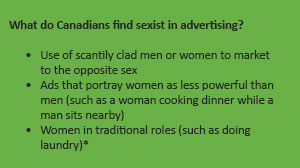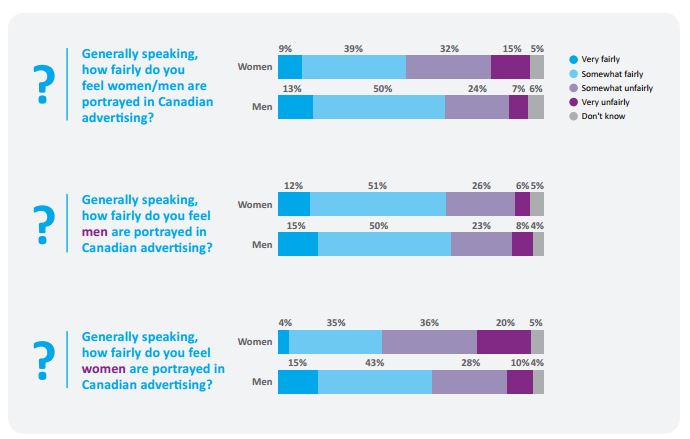How Canadian Consumers Feel About Sexism In Advertising
May 17th, 2016 | Matthew Chung, Manager, Communications and Content

Marketers who sign off on sexist ads not only run the risk of annoying and angering consumers, but of missing sales targets too, according to new research from Advertising Standards Canada.
According to the 2016 Consumer Perspectives On Advertising report, 67% of Canadians say they are less likely to buy a product from an advertiser behind a sexist ad. Only 27% say there is no impact on their purchase behaviour.

“The research clearly tells us that sexist advertising bothers some Canadians,” said Peter White, SVP Operations at Advertising Standards Canada. “This is important information for advertisers to consider in developing new campaigns.”
White professed surprise that, according to the study conducted by The Gandalf Group, the majority of Canadians feel only annoyed (46%) or resigned (15%) after seeing a sexist ad, rather than angry/outraged (9%). However, it’s clear that portraying sexism in ads can hurt the bottom line – particularly among women, 77% of which said they are less likely to buy a product from a brand behind sexist ads.
With 44% of respondents saying they find today’s ads less sexist compared with 10 years ago, it appears strides are being made by the ad industry. But there certainly is a perception among Canadian consumers that sexism is prevalent in the ads they see – 63% believe that at least some Canadian advertising is sexist toward women, while 40% believe that some advertising is sexist toward men.

“The real nugget is that advertisers can change the narrative if they choose to do so,” White said. “There’s an opportunity to better reflect society.”
Other takeaways from the report:
- 47% of those surveyed believe that women are treated either “somewhat” or “very” unfairly in Canadian advertising. 31% believe the same is true of depictions of men.
- Canadians assign blame for sexism in advertising on the company placing the ad (31%), but also society at large (26%) and advertising agencies (25%).
- Canadians have a favourable impression of advertising, with 83% saying the advertising they see, hear or read offers them at least slight value and 61% saying advertising is at least somewhat helpful with consumer decision making.
Read the Full Survey.




